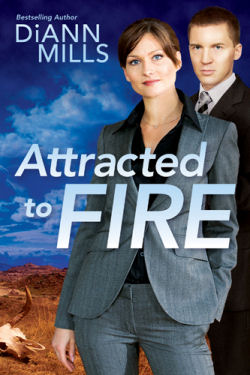
Award-winning author DiAnn Mills is a fiction writer who combines an adventuresome spirit with unforgettable characters to create action-packed, suspense-filled novels. DiAnn’s first book was published in 1998. She currently has more than fifty books in print, which have sold more than a million and a half copies. Her titles have appeared on the CBA and ECPA bestseller lists and have won placements through the American Christian Fiction Writer’s Carol Awards and Inspirational Reader’s Choice awards. DiAnn won the Christy Award in 2010 and 2011. DiAnn is a founding board member for American Christian Fiction Writers and a member of Inspirational Writers Alive; Romance Writers of America, and Advanced Writers and Speakers Association. She speaks to various groups and teaches writing workshops around the country. DiAnn is also the Craftsman mentor for the Jerry B. Jenkins Christian Writers Guild. She and her husband live in sunny Houston, Texas. Website: www.diannmills.com |
|
DiAnn DirectCreating the Essential Backstory |
|
|
The other day I was having lunch with girlfriends and the topic of diet came up. Not exactly what I wanted to hear with the holiday eating taking revenge in my rearview mirror. The diet discussion continued, but instead of plans to move forward, we confessed to what we’d eaten to get ourselves into an expanded condition. In short, we bemoaned our backstories that placed us in the present. Backstory consists of the events and circumstances that motivate a character into fresh and compelling action. What happened to the character before page one propels the story. We are four-part creatures who deal with the physical, spiritual, emotional, and mental realms of our world. Our characters have the same challenges. Robert McKee says it best: “Backstory—previous significant events in the lives of the characters that the writer can reveal at critical moments to create turning points.” When we studied fiction writing, our instructors told us to avoid backstory that doesn’t relate to the present character’s goal or problem. How does a writer make that determination? Backstory is critical in the world of story, but a master writer discerns what part of backstory is vital and what is superfluous. To avoid confusion, let’s define
what backstory is not: Donald Maass recommends restraining backstory for the first fifty pages or so of the novel. So when is backstory essential? Long before the initial writing process begins. The history of each character is intimate, personal, and exciting. Do you remember the last time you invested hours in getting to know someone new? The person most likely did not reveal flaws and weaknesses during the beginning stages of the relationship; instead, she convinced you by words and actions that she was a great person. The flaws in her character came much later as you spent time traveling down the road of life. By then we were invested in the new friend and chose to overlook character flaws. How did that person reveal her past? What emotions did she display? Was she complex or predictable? By learning the backstory of a character, actions in the present are easier for the writer to predict according to experiences and lessons learned. |
Relationships often seem contrived unless the writer has established backstory to weave how and why characters behave the way they do. The inspiration behind these relationships is revealed in snippets throughout the story. The writer holds on to the reins of backstory as though she were driving a team of runaway horses. How can the writer weave a tale unless she knows what the character wants and needs? Many writers use a character sketch to analyze the past. By discovering information from every angle of character development, a writer is able to create a picture of the character’s life before the first sentence. Take inventory of the character’s childhood. Write about the experiences that formed his/her personality for the present story. Use all seven universal emotions to learn about the character: surprise, fear, anger, sadness, disgust, happiness, and contempt. Ask the hard questions that the character might not want to discuss. Force the character to expose inner hurts and pain. In the depths of the forbidden, the writer finds the nuggets of personality, persuasion, and power. Once the writer has searched the childhood years, move on to the teens, young adulthood, and then to the current age of the character. The more you discover about the character, the richer the backstory. Understand that not everything the character states about the past is useful, only the parts that pertain to the story. Continue the exercise in time increments until one hour before the story opens. Perhaps the plotting and opening lines of the story will now take a different twist. Backstory, where will it take you? 
|
|
|
|
|
|
|








